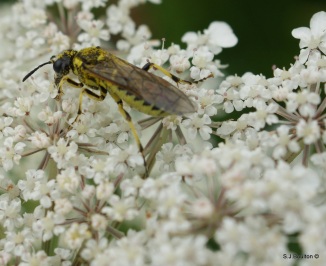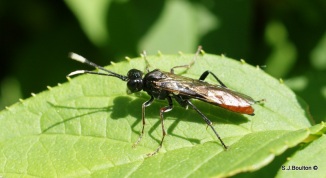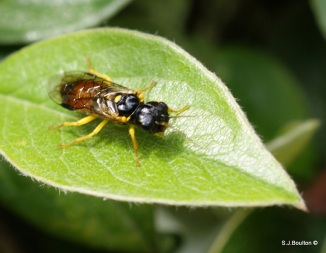A large lemon-yellow and black sawfly. Very similar to T. arcuata and T. brevicornis. The species are very difficult to separate without detailed examination. Where the image has not received expert verification, which is necessary to be certain of accuracy in this species, it is highlighted with a red box. For that reason it is only claimed as likely to be this species. Images taken at the end of August would suggest that the species is unlikely to be T. arcuata which flies quite early.
Habitat
Adult takes small insects and visits umbellifers for pollen and nectar
When to see it
From June to September… NatureSpot
Tag Archives: Tenthredo
Tenthredo livida(garden) Male
Description
This sawfly has a conspicuous white mouth and white tips to its antennae. It is really variable in colour, sometimes all black, but other forms with varying amounts of red. The white marked antennae together with the white and brown stigma in the forewing are distinctive and help with the identification.
Habitat
Found along hedgerows and woodland rides
When to see it
Adult flies from May to August
Life History
The larvae are nocturnal grazers, feeding on a variety of leaves, such as Hazel, Willow and Honeysuckle.
UK Status
Widespread and common British species
Un Id’d tenthredinidae sawfly
Pamphilius sylvaticus
Pamphilius sylvaticus
Many of them are striking in appearance, often as wasp mimics though lacking the ‘wasp waist’. Others, including the Apple sawfly (Hoplocampa testudinea), Turnip Sawfly (Athalia rosae) and Gooseberry Sawfly (Nematus ribesii), are regarded as pests because of the damage the larvae do to the leaves of fruit trees and bushes plus garden plants.







You must be logged in to post a comment.